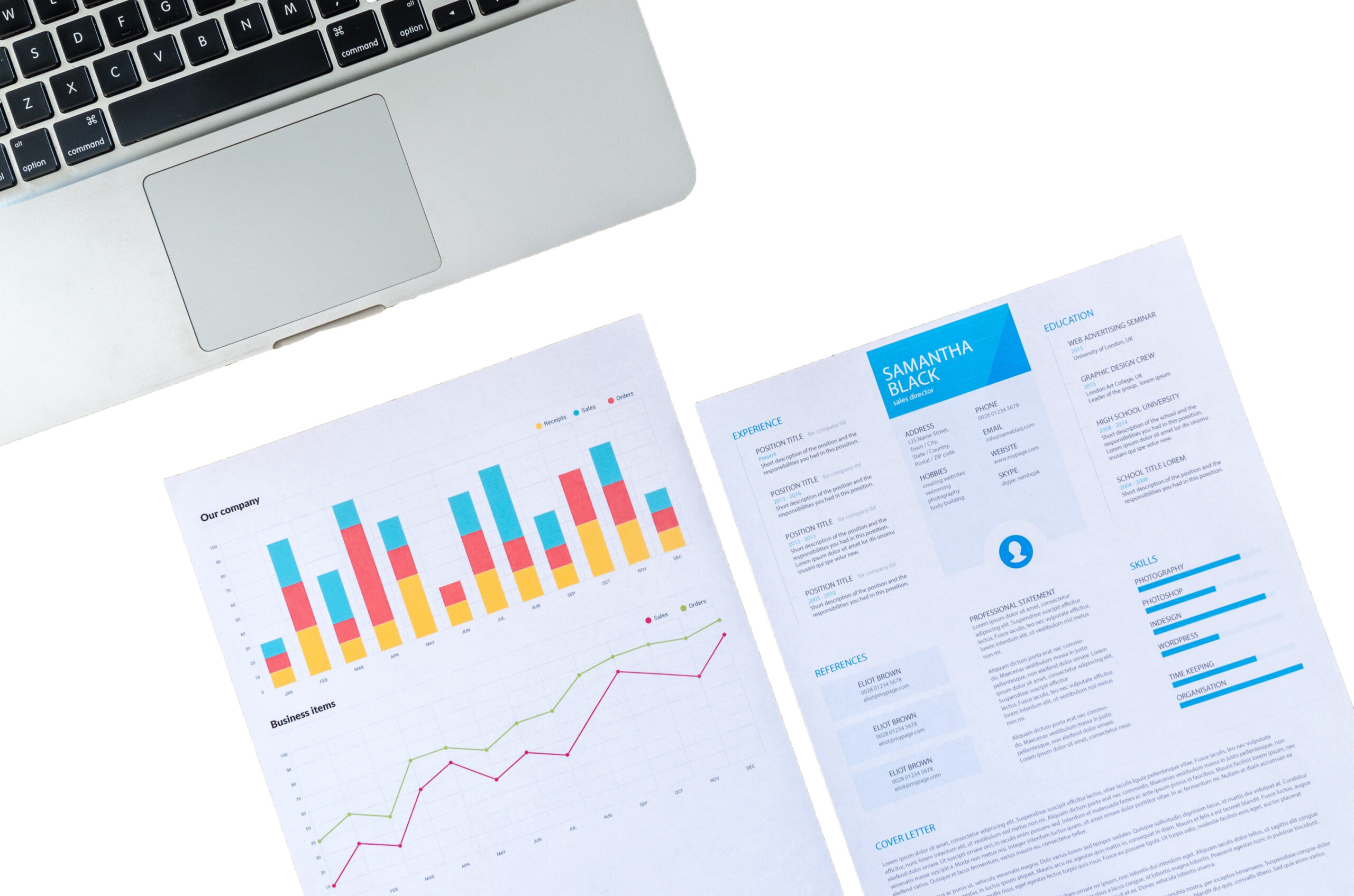The CV is the most important part of the application documents with which the first selection is made. At the same time, for many applicants, it is also the aspect that receives the least attention in the daily job search.
Before starting to create the content of the perfect résumé, one should first deal with the formal structure of one, because many avoidable mistakes happen here.
Nowadays, the tabular curriculum vitae (CV) has established itself as the standard and follows a simple breakdown: on the left side of the page you can list different time periods, on the right the corresponding data for the respective period. After the American style, the perfect résumé begins with the most recent station.
In the past, résumés were written as continuous text, but tabular overviews are common today.
When it comes to design, you shouldn’t overdo it. The focus is on the clear and understandable listing of the facts about your career to date. Optical highlights can have a positive effect, but should match your personality and the job in order not to appear artificial or even implausible.
Find out about the content and information that is relevant for specific industry and position you are applying for and implement it in your résumé in order to convince and make good impression on the employer:
• A good résumé should be clearly structured and clearly laid out on a maximum of one or two pages.
• The most important stages of the career should be presented in an easily legible font and font size. In very traditional industries, such as banking, the Times New Roman font is still recommended. The sans serif font Calibri has established itself in many other industries.
• Line spacing of 1.15 is ideal. The space between the lines makes your application more legible.
• You should also pay attention to correct language: spelling, grammar or typing errors were rated by 72% of those surveyed in the eye tracking study as a possible exclusion criterion.
• Adapt your résumé individually to the advertised position in order to gain additional points.
• A supplementary short profile with the most important qualifications rounds off the perfect résumé.
Personal data: Name, birthday and place of birth, address, marital status as well as telephone number and e-mail address.
Intended position: Name the specific job you are applying for and show that your résumé is specially tailored to it and explain why you are perfect for this exact job.
Education: This point not only includes your direct professional training, but also a degree, if available.
Special knowledge and certificates: In order to show the HR manager a complete picture of your skills and competencies, you should indicate here what special knowledge you have – and, if possible, prove this with the corresponding certificates.
But be careful: the perfect résumé does not come from having as many qualifications as possible, but rather choosing the skills that are important for the job.
Professional experience: The information should only be listed in key points
Languages: Many companies operate internationally and are actively looking for new employees to deploy in this area. Language skills are therefore an important point, especially in large companies or corporations, which you can ideally learn from a language trip or tests.
Hobbies: The leisure activities have little to do with the professional qualification, but HR managers now attach great importance to finding out something about the personality of an applicant. Hobbies in the perfect résumé can also set you apart from other candidates and spark interest.
Good luck with your application!
